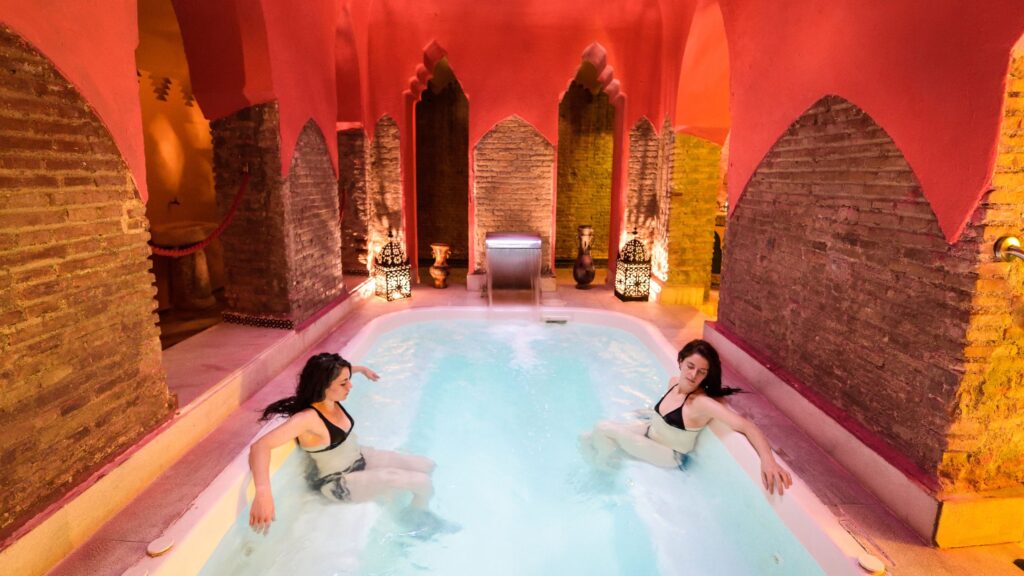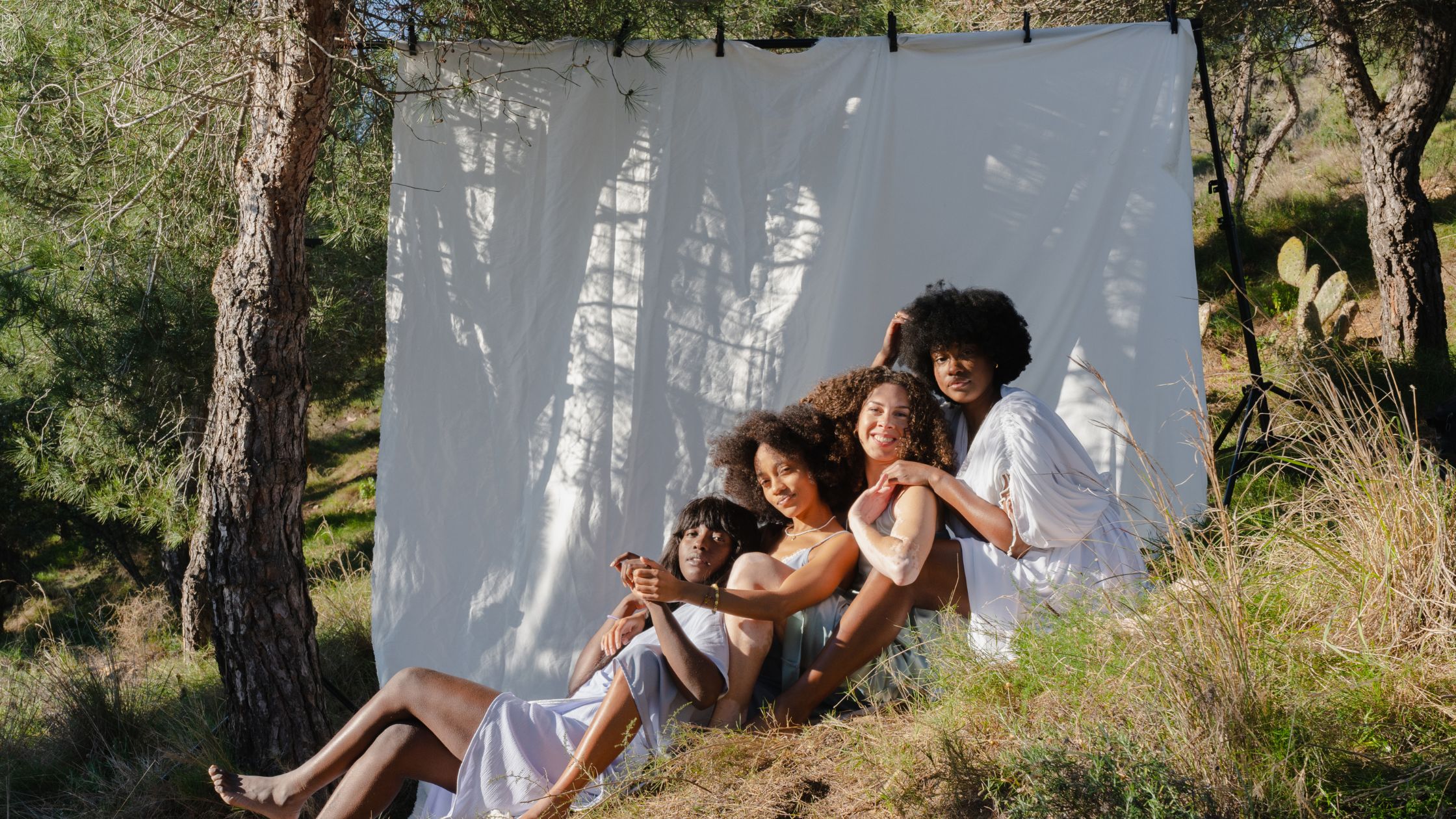The air hangs thick with secrets and steam. Bodies, draped in nothing but vulnerability and perhaps a thin cotton towel, move through chambers of increasing heat. Voices echo against ancient tiles – sometimes hushed in confession, sometimes erupting in collective laughter that bounces off domed ceilings. This is not merely bathing. This is revolution in its most intimate form. This is Hammam Feminism.
Long before Western women gathered in consciousness-raising circles of the 1970s, their Middle Eastern, North African, and Turkish counterparts had been building solidarity in the misty embrace of hammams for centuries. These bathhouses, portals to another dimension where time slows and hierarchies dissolve – have served as sanctuaries where women shed not just their clothing but the weight of societal expectations.
The hammam has always been a space where women could temporarily escape the male gaze and patriarchal structures. This is the essence of what we call Hammam Feminism – resistance through ritual, communion, and care.
Ancient Walls, Modern Struggles
The concept of Hammam Feminism doesn’t appear in academic journals or feminist manifestos, yet its practice predates written theory by millennia. In societies where women’s movements were restricted and their voices often silenced in public forums, the hammam emerged as an alternative parliament of whispers and wisdom.
The historical significance cannot be overstated. During the Ottoman Empire, when women rarely left their homes without male guardians, the weekly hammam visit represented their primary social outlet. Here, marriages were arranged, gossip exchanged, and political opinions formed far from male ears. The hammam became a classroom where mothers taught daughters about their bodies without shame, where elderly women passed down medicinal knowledge of herbs and treatments, where collective beauty rituals strengthened intergenerational bonds.
This tradition of Hammam Feminism persisted through colonization, war, and modernization. When French colonizers in Algeria attempted to “civilize” local populations by discouraging hammam attendance, women clung to their bathing traditions as acts of cultural preservation and quiet rebellion. The hammam remained steadfast – a steamy fortress protecting cultural identity.
Bodies Unbound
In societies often preoccupied with female modesty, the hammam paradoxically creates a space where women’s bodies exist without sexual objectification. Grandmother’s sagging breasts, the teenager’s emerging curves, the new mother’s stretched stomach – all coexist without judgment.
This radical acceptance forms another pillar of Hammam Feminism: the reclamation of the female body as something that exists for itself, not for others’ consumption or pleasure.
The hammam ritual involves progressive heating of the body, scrubbing away dead skin cells with rough kessa gloves, hair washing, and often massage. Women assist each other in reaching difficult spots, creating a choreography of mutual care. Young brides traditionally receive special hammam treatments before their weddings, with elaborate ceremonies celebrating their transition.
These rituals of Hammam Feminism transform physiological needs into sacred practices, elevating communal hygiene to spiritual communion.
Whispered Revolutions
Hammam Feminism operates within patriarchal constraints rather than in direct confrontation with them.
In rural Morocco during the early 2000s, local hammams became information hubs for women’s health initiatives. When government family planning programs struggled to reach conservative communities, hammam networks successfully disseminated contraceptive information through trusted female channels. What couldn’t be discussed in mixed company flowed freely in the hammam’s protective embrace.
During the Arab Spring uprisings, hammams in Tunisia and Egypt served as organizing spaces where women could safely discuss protest strategies away from government surveillance. The ancient institution adapted to modern resistance, demonstrating the enduring flexibility of Hammam Feminism as both concept and practice.

Class Dissolves in Steam
Perhaps most revolutionary about the hammam tradition is its democratic nature. While elaborate private hammams existed for wealthy families, public bathhouses welcomed women across social strata. The businesswoman might sit beside the house cleaner, both naked, both equal in their humanity.
“In the hammam, we are all just women,” explains Turkish bath attendant Ayşe Kalın, who has worked in Istanbul’s historical Çemberlitaş Hamam for thirty years. “Outside, there are rich and poor. Inside, everyone needs someone to scrub their back.”
This class-transcending aspect of Hammam Feminism challenges capitalist notions of worth and status. When royal princesses and peasant women historically shared hammam spaces, they created temporary utopias where hierarchy dissolved like salt in hot water.
The contemporary resurgence of hammam culture among young urban women represents both nostalgia for this communal equality and resistance against hyper-individualistic modern lifestyles.
Modern Revival And Global Spread
The principles of Hammam Feminism now reach beyond traditional geographical boundaries. Immigrant communities have established hammams from London to Montreal, maintaining cultural connections while introducing new generations to these practices.
Modern feminist scholars increasingly recognize the hammam’s significance in women’s history. “We’ve overlooked these spaces because they didn’t fit Western models of political organization,” admits comparative literature professor Susan Meyers. “But these were powerful incubators of female solidarity and knowledge systems operating beneath patriarchal radar.”
The 21st century has witnessed a renaissance of hammam culture, with luxury spas co-opting the aesthetic while often missing the communal essence. Yet authentic hammams continue their centuries-old mission, adapting to contemporary needs while preserving the core elements of Hammam Feminism: solidarity, body acceptance, intergenerational wisdom, and respite from patriarchal structures.
The Old Hammam: Carrying Tradition Forward
The Old Hammam in Edmonton offers not just a bathing experience but a portal to an ancient practice of female communion.
We created this space to honor traditions while addressing modern women’s needs, explains the founder of The Old Hammam. “When women enter, something shifts. Shoulders drop. Voices soften then grow stronger. The transformation is palpable.”
The Old Hammam preserves traditional architectural elements – the succession of cooling and heating rooms, the central washing area, the domed ceilings that collect and release condensation like artificial rain. But it also incorporates contemporary understanding of women’s wellness needs, creating a hybrid space where Hammam Feminism continues evolving.
As modern women navigate increasingly complex identities and pressures, the principles of Hammam Feminism offer timeless wisdom: community heals, bodies deserve respect, intergenerational connections matter, and sometimes the most revolutionary act is creating space to simply be.
Whether in ancient Moroccan medinas or North London neighborhoods, the steam rises, scarves unwrap, and sisterhood flourishes – one hammam ritual at a time.






